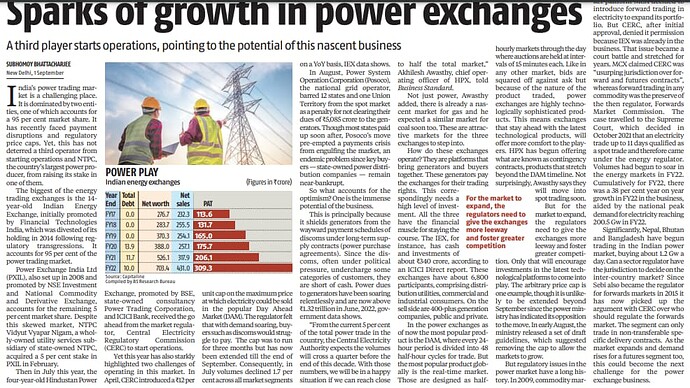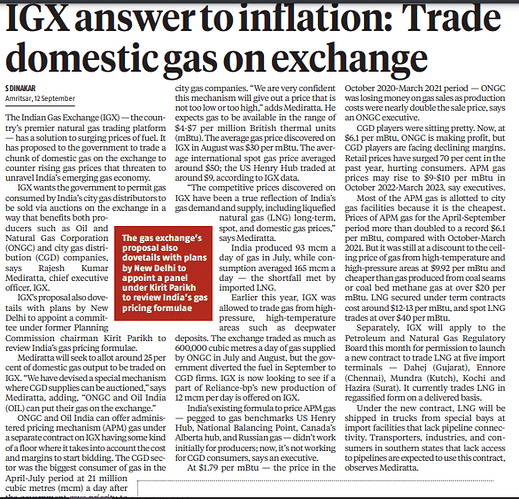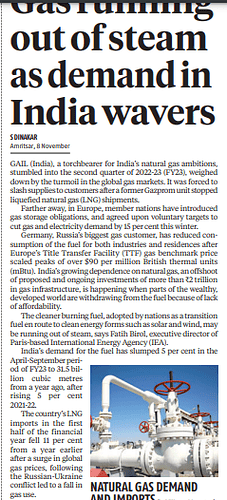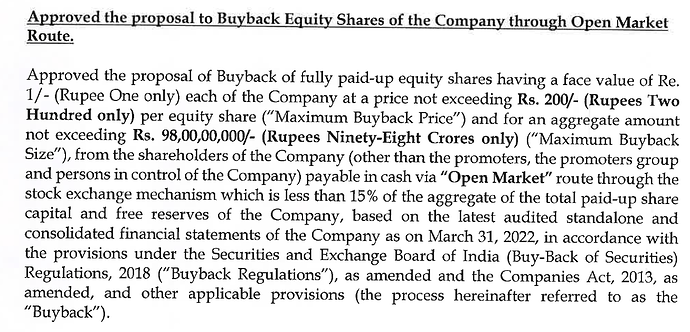Analyst meet 2022 rough notes:
Market based capacity creation potential: Ppp started because of lack of coal allocation. In renewable, no fuel issues. Lender takes a call on fixed cost, that can it be served through the market. Get paid daily basis on exchange, less issue of 6-7months discoms receivables. Financial agencies should see more incentive. seeing few IPPs set up, confidence will go up. Instead of 100% market based capacity, see 25% market based what we are talking now & 75% ppp, lenders get comfort since lenders fund 70% of capital cost. In UK for example, they are adding 30GW addition via 4th round bidding market based approach for renewable capacity creation. US, Europe has adopted market based models for capacity creation, power exchanges key role. Market based adopted by developers, Germany did.
GTAM, so far seen participation by distribution cos who are selling excess renew power on exchange. Going ahead see ipp coming. Very nascent scene.
Green market scale up: creating enablers, doing policy advocacy. When we started in 2008, it took time till today. Sure will increase over next 5-6 years, should be as big as conventional market, coz next 5-6 years even storage can become viable which which really help. Green+storage excellent combination. Green open access reg are more favourable.
(sense is confident over long term, pointed to 2008 saying it will take time)
Open access sharing regulation: provision of charging transmission charge from developers avg 0.4-0.6p. every state different no. An ipp has to pay this charge if he’s selling. If your doing bilateral & counterparty is distribution co, then ipp don’t have to pay this charge. More Cost effective for ipps to do tam market. Use reference price of dam and then to transaction in tam market. Started to increase post Nov 2020 and last year became a material factor. This year first five months this has further increased. Avoidance of transmission charge. Gna regulation has come, another regulation sharing rules in 1-2 months to be notified. Gna was notified in june, have to notify grid code & transmission charge, should get notified in 2-3months and be implemented this calendar year
Post July gain of Mx
No additional USP by any other exchange, no issue with retaining 100% in RTM, 99% dam.
Low power prices give incentive to optimize costs by buying on exchange
Analyst open access has come down since listing, used to be 60%, will green open access open opportunity, don’t see vol pick up inspite of it being there: not 1st time we are seeing drop. This time its longer, many times in the past where a month’s price is very high and open access drops. Purely dependent on market prices. And state regulation. In between seen negative developments, like increase in surcharge, no negative action in last 1 year. Last 1.5 year drop is purely on prices. Seeing buy bids on open access, very few are cleared where prices are very low.
Ebitda% increase: hard to say, can go to 90% also but have to be mindful
Spot to 25% next 3-4 years, states with surplus renewable have incentive to increase capacity as they would be able to sell, some IPs are even considering selling 100% market vs part ppp, part market.
Did a study with deolitte, developer better irrs on market based vs ppp
seen huge transmission investment in country past 7 years, today no congestion, 1 nation 1 pric 99%, area based pricing no more relevant
AT&T losses are still on higher side of 21%, issue of o/s dues continue 2.5Lcr
Open access clearance has come down drastically 60% yoy
Aggregators are there in global. We have only traders in india. Allow aggregators to participate in the spot markets & offer fixed price contract to industrial consumers. They can pick from small set of users. Would be more relevant when we have green open access, like a small consumer with 100kw. Need an aggregator for 50, 60 or 5,10 consumers at once. We are doing
Nepal registered 365mw capacity. Bangla much more potential vs Nepal, Bhutan.
IEX Gas exchange: were waiting for certain enablers, thought govt notification would come. We took the risk of starting before only 2019, new sector for us, and then govt supported us after seeing it can work. Initiative on our end. Started in Jun 20, govt saw market reaction, then govt issued reg in July.
In Europe, look at market size, started slowly with neighbouring countries, then increased. Neighbouring countries need to do policies, most of transmission is locked in long term agreements.
As of now not considering discounts on tam like competitors, maybe in ldc maybe we consider
Gross bidding is basically voluntary, distribtuon co can take a call how much capacity they want to self schedule, how much on market, or how much they want to buy. States found merit, but adoption of this needs time. Awaiting approval. Not happened out. Order is reserved. Then will work with states. Difficult to commit when this will happen, slow process, hired a consultant also to work with 1 big state, work with them, show them benefit and help them also in bidding. Will see what happens.
(does not look likely as per tone)
Gas, gst is the enabler, it’s a showstopper
Disclosure: Invested






